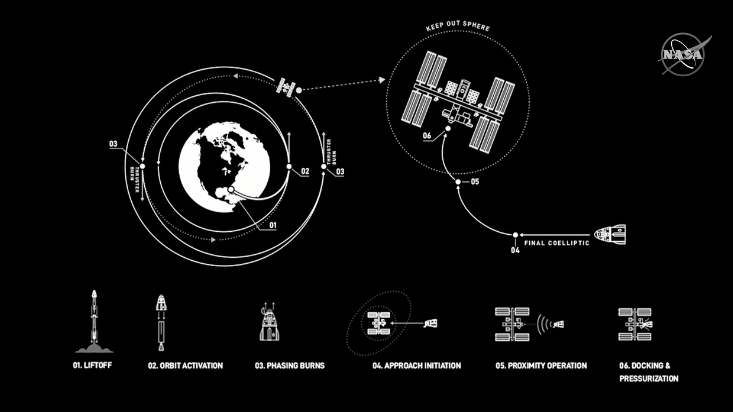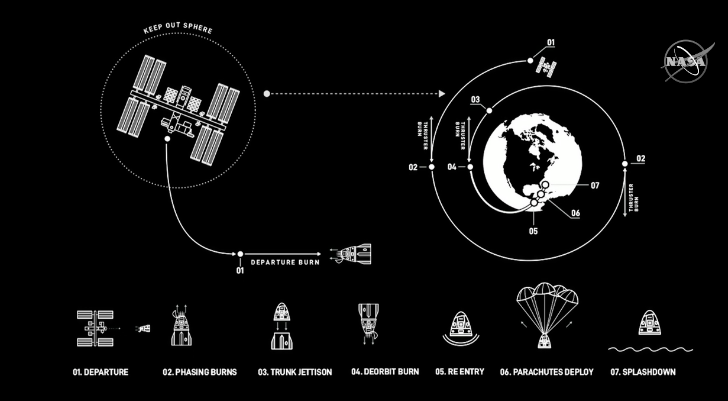Dragon set for first crewed flight to ISS
/After nearly nine years, NASA is finally on the cusp of regaining its ability to independently launch people into orbit. The Demo-2 Crew Dragon mission is slated to send NASA astronauts Doug Hurley and Bob Behnken to the International Space Station for a stay of at least a month as early as late May.
Crew Dragon, or Dragon 2, is a spacecraft that has been in development by SpaceX under NASA's Commercial Crew Program, along with Boeing’s CST-100 Starliner spacecraft, since 2010. Despite years of delays — both technical and financial — the company and U.S. space agency are finally ready to fly the first crewed flight test of this new Dragon spacecraft.
Dubbed Demo-2, the flight is a follow-up to the March 2019 Demo-1 mission, which saw an unpiloted Dragon 2 spacecraft autonomously dock with the ISS.
Demo-2 was supposed to happen as early as several months after Demo-1, but because of an abort motor static fire test failure in April 2019, and several parachute development delays, the mission was delayed — ultimately to May 27, 2020.
If it launches on that date, it’ll have been 3,246 days since the last human spaceflight orbital launch from U.S. soil.
According to NASA, there is a backup launch date on May 30.
Hurley, the spacecraft commander, is a veteran of two space shuttle missions, STS-127 in July 2009 and STS-135 in July 2011. STS-135 was the final space shuttle flight. For the Demo-2 mission, he'll be responsible for activities such as launch, landing and recovery, according to NASA.
Behnken is the mission's joint operations commander and will be responsible for rendezvous, docking and undocking. Additionally, he'll take part in various Demo-2 activities while docked to the ISS, according to NASA.
Also a veteran of two space shuttle missions, Behnken flew into orbit in March 2008 during the STS-123 mission and in February 2010 during STS-130.
After launch, which is scheduled for 20:32 UTC (4:32 p.m. EDT) May 27, the duo is slated to reach the ISS just under 24 hours later at 15:29 UTC (11:29 a.m. EDT) May 28 and dock at the forward end of the Harmony module, the same port the Demo-1 mission utilized.
While aboard the ISS, NASA said the crew will continue to evaluate the spacecraft as well as help the Expedition 63 crew with various station activities.



Demo-2 is being baselined for a month-long stay, but the mission could be extended to up to about 110 days. The limiting factor is the degradation of the solar cells on the spacecraft’s trunk, the agency said. However, operational Dragon 2 spacecraft are expected to be able to stay on orbit for up to 210 days.
At the end of their mission, Hurley and Behnken will undock from the ISS before performing a deorbit burn about two days later. The duo and their spacecraft are expected to splash down in the Atlantic Ocean off the coast of Cape Canaveral and are slated to be picked up by SpaceX's Go Navigator recovery vessel.
Once Demo-2 is complete and NASA certifies the spacecraft for operational use, the next mission is slated to bring four new crew members to the ISS via SpaceX's Crew-1 mission, also called U.S. Crew Vehicle 1. The astronauts to fly aboard that mission are NASA's Michael Hopkins, Victor Glover and Shannon Walker, as well as Japan's Soichi Noguchi.
Crew-1 could fly as soon as September 2020. The astronauts are expected to stay aboard the ISS until at least the first quarter of 2021.


